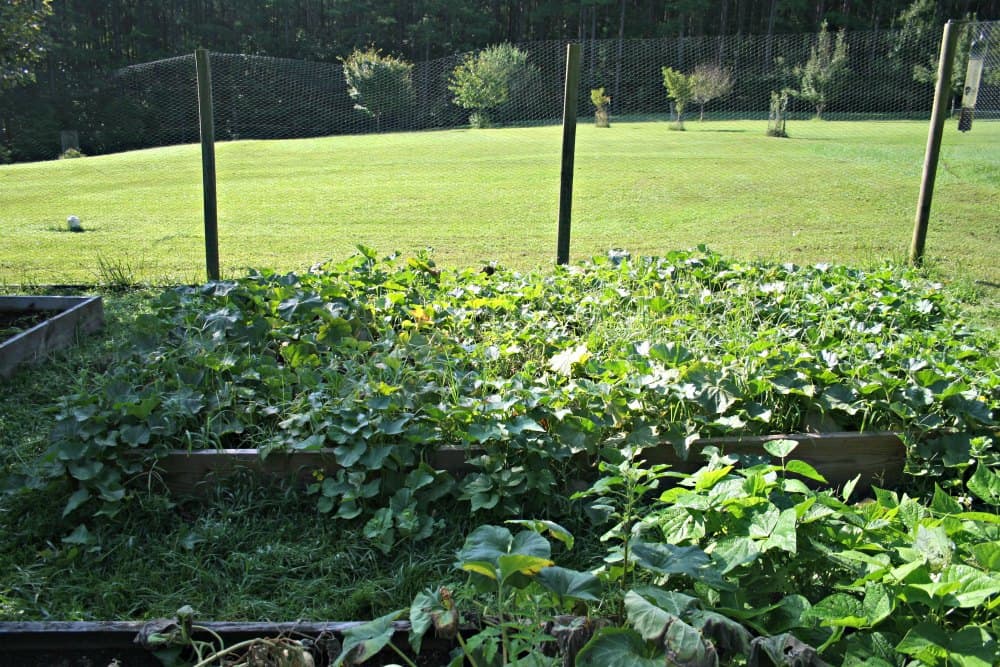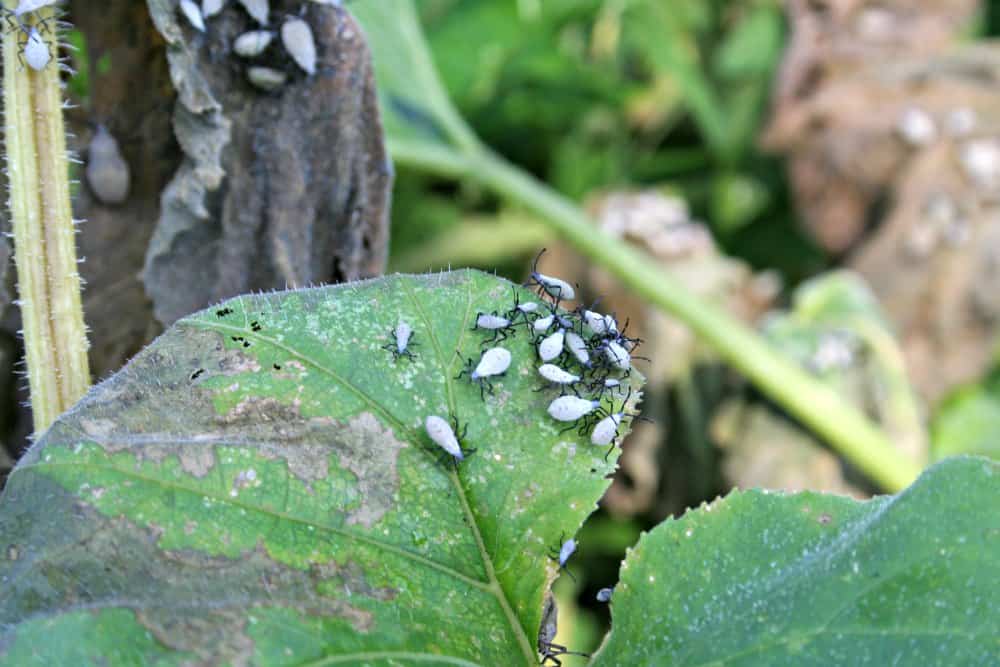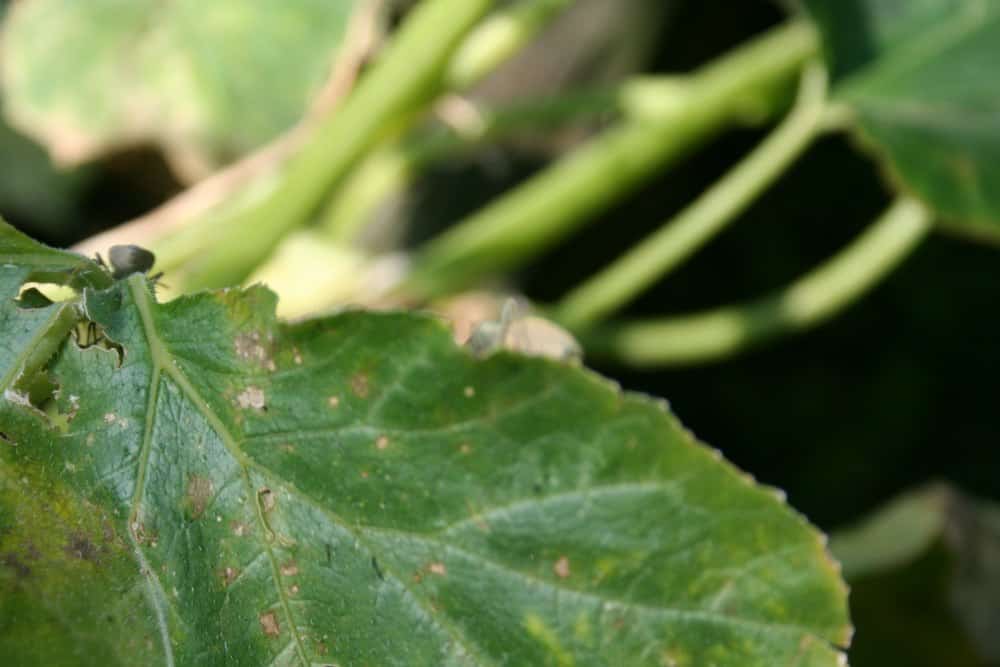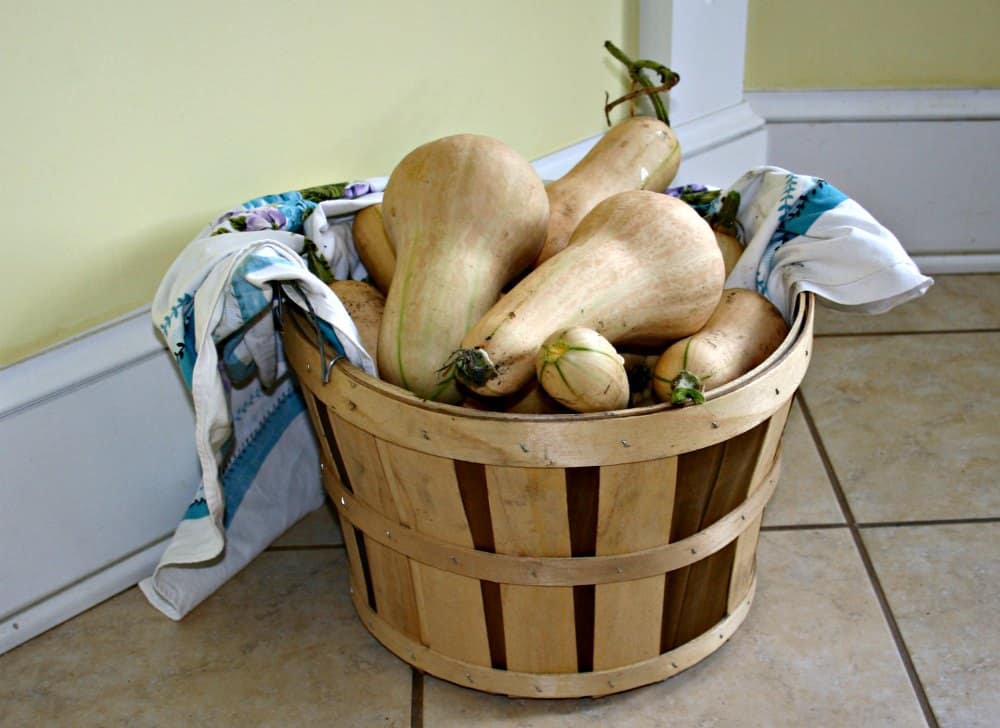There are many organic solutions to control squash bugs. Some are more reliable than others.
These pesky bugs spread microorganisms that can kill squash, zucchini, and related plants. Organic methods are effective but must be used consistently to achieve good results.

Organic Solutions to Control Squash Bugs
Squash bugs (Anasa tristis) damage both winter and summer squash plants, zucchini, and to a lesser extend, melons and cucumbers.
I have them on my butternut squash, a few on the acorn squash, and a handful on the muskmelons.
Here’s what the nymphs (young insects) look like. The eggs are oval, brown, and glued by the insects in clusters along the leaves.

Squash bugs, according to the entomology department of Penn State University, are a serious pest. They overwinter in garden debris, which is yet another great reason to clean up your garden each fall.
Adults emerge and food and mates during the summer months. They prefer summer and winter squash plants and lay their eggs near the central rib leaf.
If the eggs aren’t removed, they hatch in 1 to 2 weeks. It takes about six week for the nymphs to become adults. During this time, both adults and nymphs use piercing mouthparts to pierce the plant leaves and suck out the sap.
Squash bugs have only one generation each year. The nymphs you see today will mature and overwinter to continue the cycle next year.
Signs of Squash Bug Damage
You can tell you have signs of squash bug damage by yellow spots on the leaves. The yellow spots eventually turn black or gray and the leaves shrivel and die.
Some species also spread bacterial wilt, which turns leaves black and gray, too. Either way, the plant eventually dies.

Organic Squash Bug Control – 3 Ways
These organic solutions to control squash bugs are time-tested. They’ve worked fairly well in my garden this year, allowing me to harvest a tremendous amount of winter squash and cantaloupe.
I prefer organic methods to control squash bugs because the go-to chemical, Sevin (carbaryl) doesn’t do a great job controlling the bugs. Not only that, but carbaryl is a neurotoxin; that’s how it kills bugs. Now, I don’t know about you, but I feel like why bother growing my own food if I’m just going to sprinkle poison on it? If I want conventionally treated vegetables, I can buy them easily and cheaply at the store.
For me, organic is the way to grow. Here’s what’s worked in my garden as organic squash bug control.
- Catch then while they’re young – hand pick eggs and nymphs. This isn’t for the faint of heart or the squeamish but it’s fairly easy. Use a piece of masking tape and peel the eggs off of the leaves. I’ve also scraped them off with a plastic spoon. Put on a pair of gloves and pick nymphs off and drop them into a pail with dishwashing liquid soap and water. The soap makes it slippery so they can’t get out and they drown. But be stealthy – these are bugs that hide, and they hide quickly if they see you coming!
- Crop rotation – Perhaps the best organic practice used in my raised bed vegetable garden was crop rotation. For the past several years, I just didn’t grow any squash plants. This year, I grew acorn squash, butternut squash, and muskmelon. I planted them far apart so that if the squash bugs attacked one area they might not find the others. By spacing the plantings years apart, I was hoping the squash bug population would go down, which it seems to have done.
- Companion planting – Companion plants are your best friends. I’ve added marigolds, dill, calendula and other herbs. The Free Range Life recommends planting icicle radishes among squash plants. I’m going to try that next year. It sounds like a great idea!

Organic control of squash bugs is possible but takes some time and effort. If you care about the environment and growing healthy vegetables for your family, it’s time to implement them in your garden.





Thank you for the award! I appreciate it!